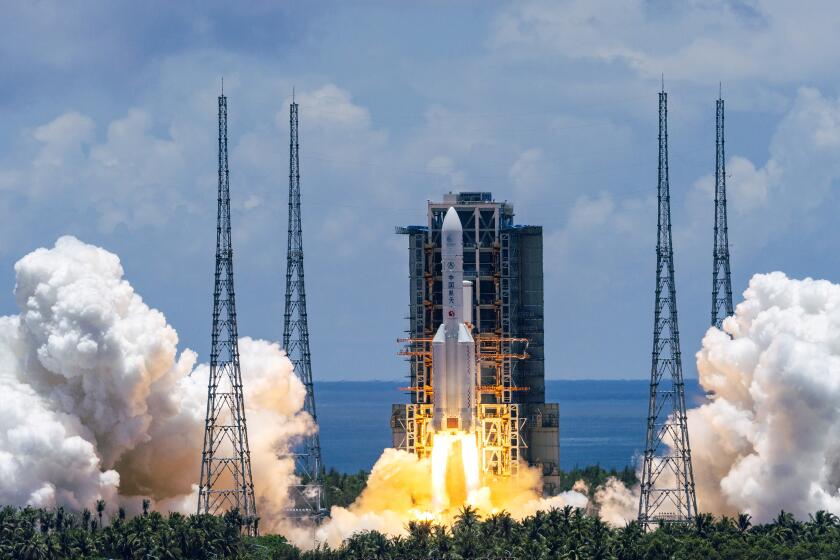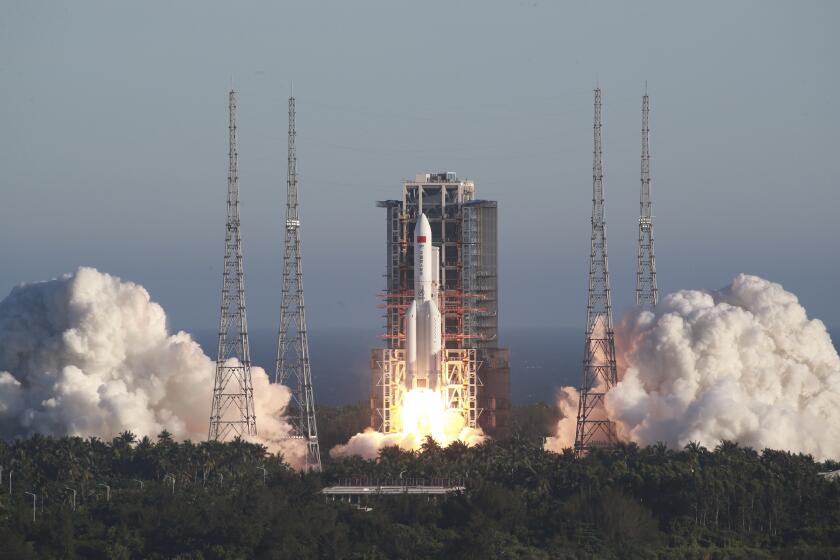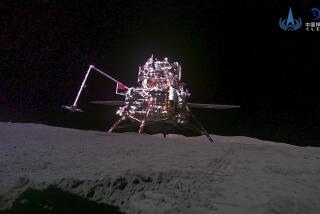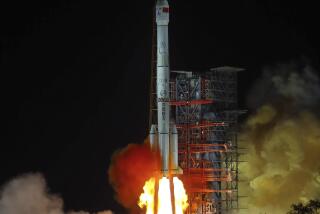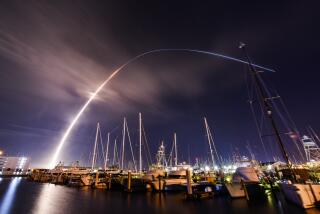China launches its most ambitious lunar mission yet
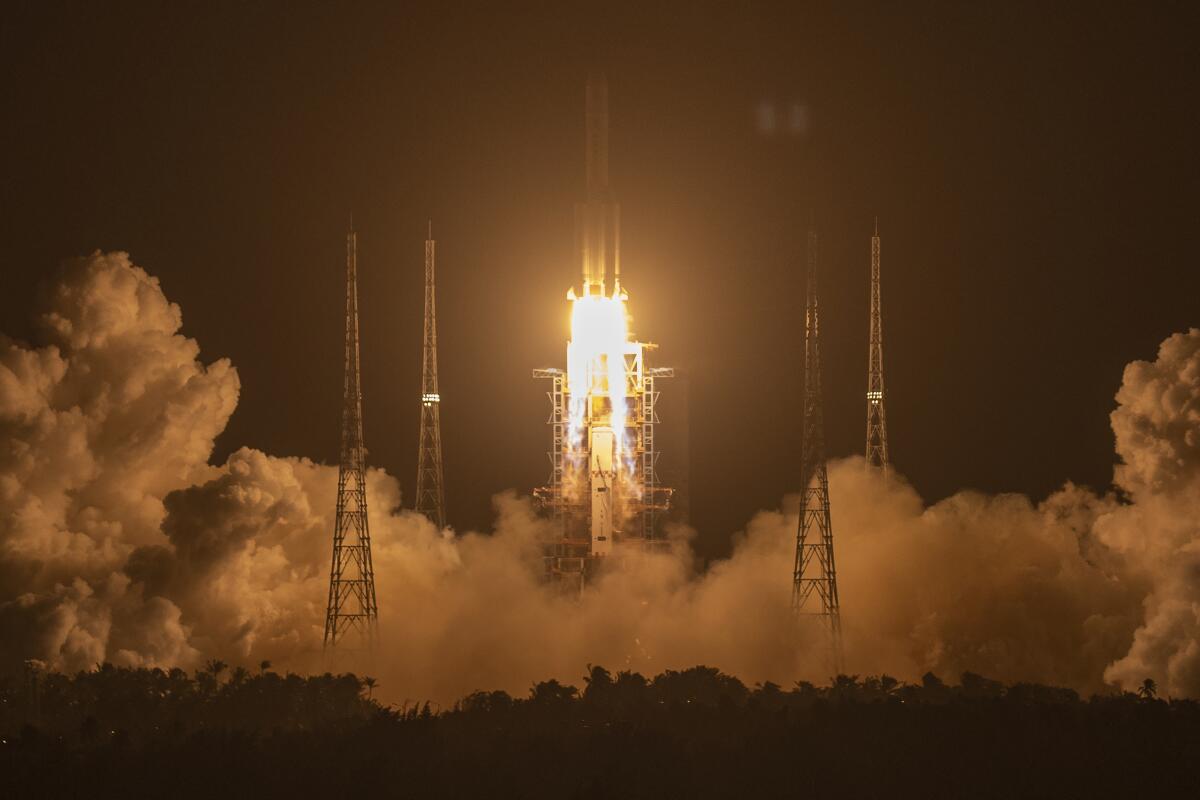
WENCHANG, China â China launched an ambitious mission Tuesday to bring back rocks and debris from the moonâs surface for the first time in more than 40 years â an undertaking that could boost human understanding of the moon and of the solar system more generally.
Changâe 5, named for the Chinese moon goddess, is the countryâs boldest lunar mission yet. If successful, it would be a major advance for Chinaâs space program, and some experts say it could pave the way for bringing samples back from Mars or even a crewed lunar mission.
The four modules of the Changâe 5 spacecraft blasted off at just after 4:30 a.m. in China atop a massive Long March-5Y rocket from the Wenchang launch center on the coast of the southern island province of Hainan.
Minutes after liftoff, the spacecraft separated from the rocketâs first and second stages and slipped into Earth-moon transfer orbit. About an hour later, Changâe 5 opened its solar panels, the craftâs independent power source.
Spacecraft typically take three days to reach the moon.
The launch was carried live by national broadcaster CCTV, which then switched to computer animation to show its progress into outer space.
In a milestone that underscores Chinaâs ambition to become a global leader in space exploration, the Changâe-4 lunar lander became the first space vehicle to touch down on the far side of the moon, where it began to explore terrain that had never before been reached.
The missionâs key task is to drill almost seven feet beneath the moonâs surface and scoop up about 4.4 pounds of rocks and other debris to be brought back to Earth, according to NASA. That would offer the first opportunity for scientists to study newly obtained lunar material since the American and Russian missions of the 1960s and 1970s.
The Changâe 5 landerâs time on the moon is scheduled to be short and sweet. It can stay only one lunar daytime, or about 14 Earth days, because it lacks the radioisotope heating units to withstand the moonâs freezing nights.
The lander will dig for materials with its drill and robotic arm and transfer them to whatâs called an ascender, which will lift off from the moon and dock with the service capsule. The materials will then be moved to the return capsule to be hauled back to Earth.
The technical complexity of Changâe 5, with its four components, makes it âremarkable in many ways,â said Joan Johnson-Freese, a space expert at the U.S. Naval War College.
In an unlikely collaboration during the Apollo era, NASA was filled with Jewish scientists and a large group of Germans who had worked for Adolf Hitler before and during World War II. That the two groups were able to work side by side suggests a level of reconciliation, or at least acceptance, that would seem a near impossibility in todayâs fractious social and political climate.
âChina is showing itself capable of developing and successfully carrying out sustained high-tech programs, important for regional influence and potentially global partnerships,â she said.
In particular, the ability to collect samples from space is growing in value, said Jonathan McDowell, an astronomer at the Harvard-Smithsonian Center for Astrophysics. Other countries planning to retrieve material from asteroids or even Mars may look to Chinaâs experience, he said.
While the mission is âindeed challenging,â McDowell said, he noted that China has already landed twice on the moon with its Changâe 3 and Changâe 4 missions, and it showed with a 2014 Changâe 5 test mission that it can navigate back to Earth, reenter and land a capsule. All thatâs left is to show it can collect samples and take off again from the moon.
âAs a result of this, Iâm pretty optimistic that China can pull this off,â he said.
China has launched its most ambitious Mars mission yet in an attempt to join the United States in successfully landing a spacecraft on the red planet.
The mission is among Chinaâs boldest since it first put a human in space in 2003, becoming only the third nation to do so after the U.S. and Russia.
Changâe 5 and future lunar missions aim to âprovide better technical support for future scientific and exploration activities,â Pei Zhaoyu, mission spokesperson and deputy director of the Chinese National Space Administrationâs Lunar Exploration and Space Engineering Center, told reporters at a briefing Monday.
âScientific needs and technical and economic conditionsâ would determine whether China decides to send a crewed mission to the moon, said Pei. âI think future exploration activities on the moon are most likely to be carried out in a human-machine combination.â
While many of Chinaâs crewed spaceflight achievements, including building an experimental space station and conducting a spacewalk, reproduce those of other countries from years past, the CNSA is now moving into new territory.
Changâe 4 â which made the first soft landing on the moonâs relatively unexplored far side almost two years ago â is currently collecting full measurements of radiation exposure from the lunar surface, information vital for any country that plans to send astronauts to the moon.
China in July became one of three countries to have launched a mission to Mars, in Chinaâs case an orbiter and a rover that will search for signs of water on the red planet. The CNSA says the spacecraft Tianwen 1 is on course to arrive at Mars around February.
China has increasingly engaged with foreign countries on missions, and the European Space Agency will be providing important ground station information for Changâe 5.
U.S. law, however, still prevents most collaborations with NASA, excluding China from partnering with the International Space Station. That has prompted China to start work on its own space station and launch its own programs that have put it in a steady competition with Japan and India, among other Asian nations seeking to notch new achievements in space.
China plans to send four crewed space missions and the same number of cargo craft to complete work on its permanent space station within about two years.
Chinaâs space program has progressed cautiously, with relatively few setbacks in recent years. The rocket being used for the current launch failed on a previous launch attempt but has since performed without a glitch, including launching Changâe 4.
âChina works very incrementally, developing building blocks for long-term use for a variety of missions,â Johnson-Freese said. Chinaâs one-party authoritarian system also allows for âprolonged political will that is often difficult in democracies,â she said.
While the U.S. has followed Chinaâs successes closely, itâs unlikely to expand cooperation with China in space amid political suspicions, a sharpening military rivalry and accusations of Chinese theft of technology, experts say.
âA change in U.S. policy regarding space cooperation is unlikely to get much government attention in the near future,â Johnson-Freese said.
More to Read
Sign up for Essential California
The most important California stories and recommendations in your inbox every morning.
You may occasionally receive promotional content from the Los Angeles Times.

